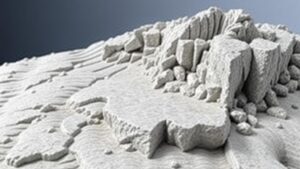The Role of Ore Screening in Agricola’s Methods for Pre-Processing Materials
The Role of Ore Screening in Agricola’s Methods for Pre-Processing Materials
Ore screening plays a pivotal role in pre-processing materials within Agricola’s methods, which emphasize efficiency, sustainability, and productivity in resource extraction. The focus of this article is to explore the intricacies of ore screening, detailing its importance, techniques, and real-world applications in context with Agricolas methodologies.
Understanding Ore Screening
Ore screening is the process of separating desired materials from unwanted materials using various methods, primarily based on particle size. This initial separation is crucial as it optimizes subsequent processing stages, reduces waste, and enhances extraction efficiency. In Agricola’s context, which dates back to the 16th century, this technique laid foundational principles that continue to influence modern practices.
Importance of Ore Screening
The importance of ore screening in Agricolas methods cannot be overstated. Effective screening allows for:
- Increased Efficiency: By separating fine materials from coarse ones, subsequent processes such as grinding and flotation become more focused and efficient.
- Cost Reduction: Screening reduces the amount of material that must be processed and thus lowers operational costs significantly.
- Waste Minimization: By filtering out waste materials early in the process, ore screening ensures that only viable products move forward in production.
- Improved Recovery Rates: Targeted extraction of high-quality aggregates increases overall recovery of valuable minerals.
Techniques in Ore Screening
Agricola utilized various techniques that have evolved into contemporary practices. Some of these essential techniques include:
- Mechanical Screening: This includes the use of screens or sieves to separate particles based on size. Modern screening often uses vibratory screens, which maximize material throughput.
- Water-Based Screening: Water is used to aid the separation process. This is particularly prevalent in placer mining, where heavy materials are separated from lighter ones using hydraulic methods.
- Hand Sorting: In some cases, manual techniques were employed to visually inspect and separate ore from impurities–an approach that persists in certain artisanal mining operations today.
Case Study: The Application of Ore Screening in Agriculture
One real-world application of ore screening can be found in the mining of phosphate rock for agricultural fertilizers. Phosphates are essential for plant growth, and the screening process ensures that only high-grade phosphate is extracted for processing. For example, using a two-stage screening system can lead to recovery rates exceeding 90%, significantly improving the economics of phosphate production.
Challenges and Considerations
While ore screening is highly beneficial, it also presents challenges that practitioners must navigate. Common concerns include:
- Equipment Maintenance: Screening equipment can wear down quickly, necessitating regular maintenance and costly downtime.
- Operator Expertise: Effective screening requires skilled operators who understand the materials and processes involved.
- Environmental Impact: Dust and waste generated during screening operations can adversely affect local ecosystems, necessitating stringent environmental controls.
Conclusion and Actionable Takeaways
To wrap up, ore screening is a fundamental aspect of Agricola’s methods for pre-processing materials that has lasting significance in both historical and contemporary mining practices. As industries face increasing pressure to enhance efficiency and sustainability, implementing effective screening techniques remains a priority. To achieve this, practitioners should focus on investing in modern screening technologies, training skilled operators, and adopting environmentally responsible practices.
Overall, organizations that prioritize and enhance their ore screening processes are likely to achieve better resource management and increased profitability in the competitive landscape of material extraction.
